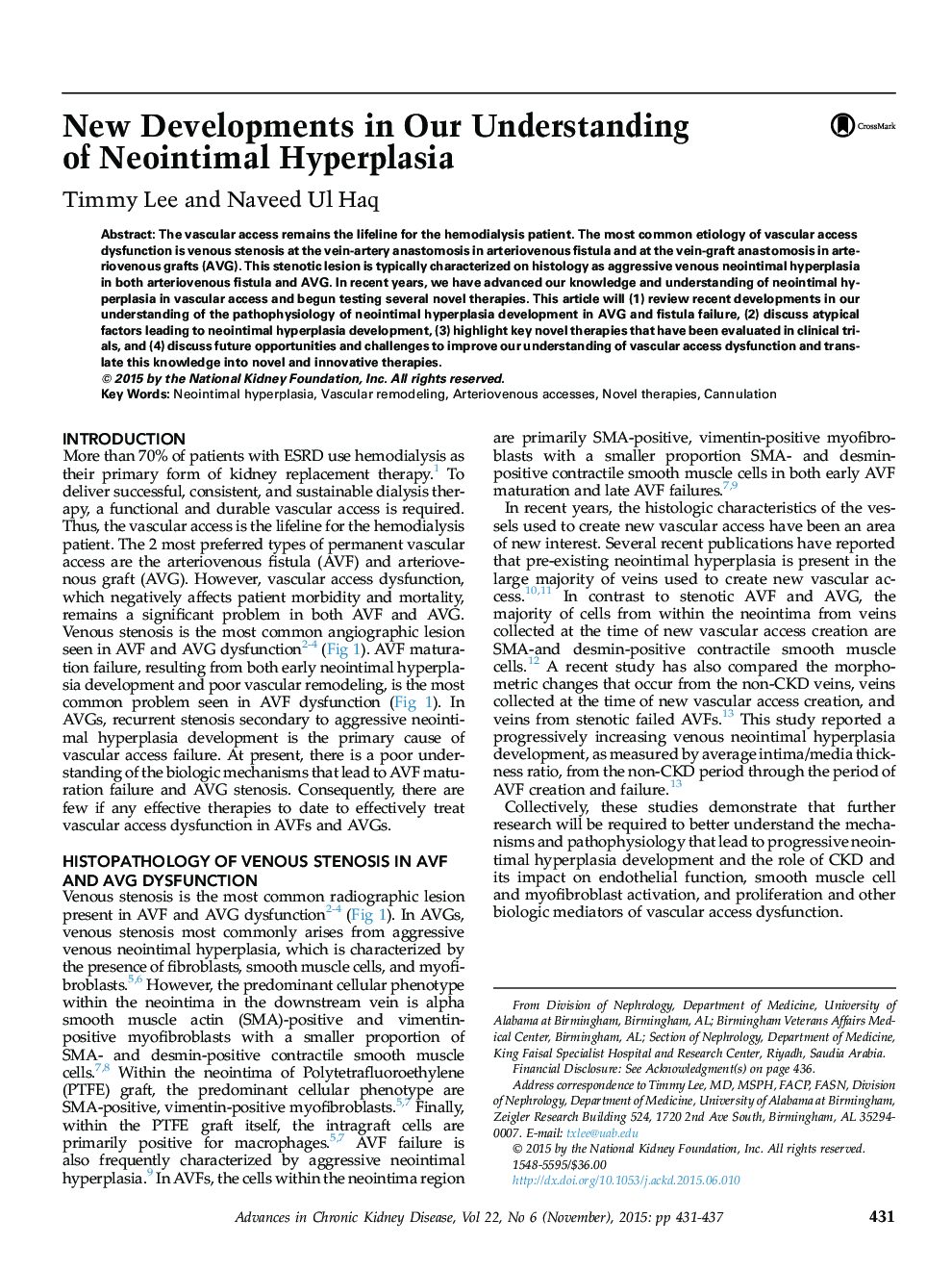| Article ID | Journal | Published Year | Pages | File Type |
|---|---|---|---|---|
| 3846350 | Advances in Chronic Kidney Disease | 2015 | 7 Pages |
Abstract
The vascular access remains the lifeline for the hemodialysis patient. The most common etiology of vascular access dysfunction is venous stenosis at the vein-artery anastomosis in arteriovenous fistula and at the vein-graft anastomosis in arteriovenous grafts (AVG). This stenotic lesion is typically characterized on histology as aggressive venous neointimal hyperplasia in both arteriovenous fistula and AVG. In recent years, we have advanced our knowledge and understanding of neointimal hyperplasia in vascular access and begun testing several novel therapies. This article will (1) review recent developments in our understanding of the pathophysiology of neointimal hyperplasia development in AVG and fistula failure, (2) discuss atypical factors leading to neointimal hyperplasia development, (3) highlight key novel therapies that have been evaluated in clinical trials, and (4) discuss future opportunities and challenges to improve our understanding of vascular access dysfunction and translate this knowledge into novel and innovative therapies.
Related Topics
Health Sciences
Medicine and Dentistry
Nephrology
Authors
Timmy Lee, Naveed Ul Haq,
